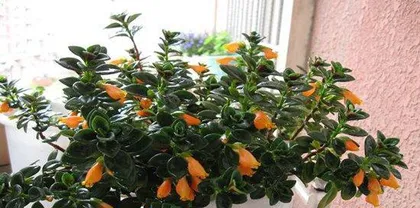Spring and summer are the peak growing season for flowers and the best time for people to enjoy them. How to properly care for your flowers to help them grow healthier and display their most beautiful form? This article will provide a detailed introduction to the methods and techniques for flower care during the spring and summer seasons.

Watering Properly—Not Too Much or Too Little
During the spring and summer seasons, flowers need an adequate amount of water to sustain growth, but they should not be overwatered. We need to master the right amount and frequency of watering. Generally, water once or twice a week based on the dryness of the topsoil.
Fertilization—Use in Moderation, Pay Attention to Timing
Spring and summer are the fastest growing periods for flowers, so their nutritional needs are also high. When fertilizing, it is important to use it in moderation and apply it according to the needs of different varieties. At the same time, pay attention to the timing of fertilization, as applying it during the active growth period can better promote the growth of flowers.

Regular Pruning—Helping Flowers Grow Better
Spring and summer are the growing season for flowers, and also a time of lush branches and leaves. During this time, we need to prune flowers regularly, which can effectively remove branches and leaves affected by pests, diseases, or other problems, allowing the flowers to grow healthier.
Maintaining Suitable Temperature—Avoiding Overheating or Overcooling
Spring and summer are the golden period for flower growth, but they are also susceptible to temperature changes. Therefore, we need to pay attention to maintaining a suitable temperature to avoid overheating or overcooling. At the same time, ensure good ventilation to keep the air circulating.
Pest and Disease Control—Treating Them Promptly
Spring and summer are high seasons for various pests and diseases. We need to regularly check the health of our flowers and take timely control measures. Additionally, materials like pine needles can be spread around the plants to effectively prevent some insects from invading.

Controlling Sunlight Exposure—Ensuring Adequate Light
Spring and summer are the golden period for flower growth, and they also need sufficient light to help them grow. We need to master the duration of sunlight exposure according to the needs of different varieties. Generally, flowers need 6-8 hours of sunlight per day, but some varieties require longer exposure.
Repotting When Necessary—Keeping Soil Loose
Spring and summer are the peak growing season for flowers, and the looseness of the soil is crucial for their growth. Therefore, we need to pay attention to repotting in a timely manner and adjusting the soil's texture to keep it loose.
Regular Cleaning—Maintaining Environmental Hygiene
During the spring and summer seasons, flowers are susceptible to dust, dirt, and other contaminants. Therefore, we need to clean the flowers and pots regularly to keep the environment clean and hygienic.
Paying Attention to Plant Spacing—Avoiding Competition
When planting flowers, we need to pay attention to the spacing between plants to avoid competition. This is especially true for sun-loving plants, which can easily shade each other in the summer, hindering their growth.
Maintaining Suitable Humidity—Keeping Moisture Levels Moderate
Spring and summer are a period of vigorous growth for flowers, and they also need suitable humidity to help them grow. We need to maintain moderate humidity around the flowers, especially during hot and dry weather, by methods such as misting to increase air humidity.
Mastering Fertilization Timing—Promoting Healthier Growth
Spring and summer are the growing season for flowers and the best time for fertilization. We need to master the timing of fertilization based on the needs and growth status of different varieties to help the flowers grow healthier.
Regularly Loosening Soil—Increasing Soil Aeration
During the growth process of flowers, the looseness of the soil is crucial for their development. Therefore, we need to regularly loosen the soil to increase its aeration, helping flowers to better absorb nutrients.
Avoiding Intense Sunlight—Protecting Flower Health
In the summer, intense sunlight can easily damage flowers. Therefore, we need to avoid strong exposure, especially during midday. Methods like using shade nets can be employed to ensure flowers receive an appropriate amount of light.
Controlling Fertilizer Amount—Do Not Overapply
Spring and summer are the peak growing season for flowers, and their nutritional needs are high. However, when fertilizing, we must be careful not to overapply, as this can harm the flowers. It is also important to pay attention to the method and timing of fertilization to allow the flowers to better absorb nutrients.
Timely Transplanting—Protecting Flower Growth
During the spring and summer seasons, the growth rate of flowers is very fast. Therefore, we need to transplant them in a timely manner and provide them with a suitable growing environment so they can grow better and display their most beautiful form.
Caring for flowers in the spring and summer requires attention to many details, including watering, fertilizing, pruning, maintaining suitable temperatures, pest and disease control, managing sunlight exposure, and more. Only by mastering these techniques and methods can you ensure your flowers grow healthier and more beautifully during the spring and summer seasons.